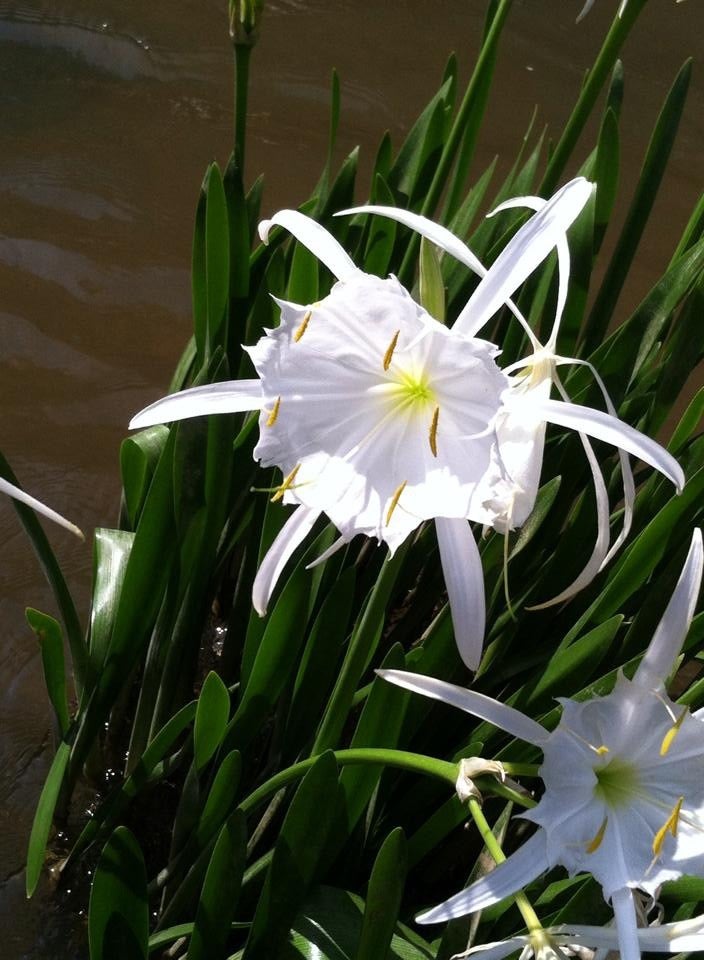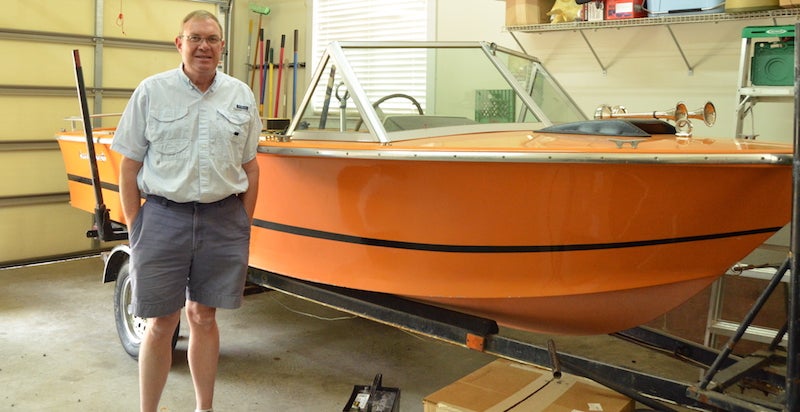Rare Beauty: Endangered lily finds shelter in Lake Mitchell
Published 10:45 am Wednesday, April 12, 2023

- Lake Mitchell Cahaba Lilies are hard to get to and best left alone, but Cahaba Lilies can be safely viewed in Bibb County. (CHAN ALDRIDGE | CONTRIBUTED)
|
Getting your Trinity Audio player ready...
|
By JOYANNA LOVE | Managing Editor
Away from the water sports and fast boats nestled in an out-of-the-way shallow area, Lake Mitchell provides a haven for a rare form of lily.
These Cahaba Lilies can only live in flowing water, according to Hugh Nichols of the Chilton County Master Gardens Association.
“There are some on Hatchet Creek that I am aware of,” Nichols said.
Peggy Bullard of the Lake Mitchell Home Owners and Boat Owners said the Lake Mitchell
Cahaba Lilies are hard to get to because the water is too shallow for some boats.
“We are proud to have them growing on Lake Mitchell,” Bullard said.
Cahaba Lilies need to be left alone to survive.
“The big problem with the lilies is a lot of the places that they are growing now … it is easy for people to sneak in and steal the plants, but then they don’t understand that when they take them home, if they don’t have these conditions, the lily is going to die,” Jerry Farmer, CCMGA president, said. “They are not on purpose, but they are inadvertently, killing these lilies off.”
Anything that changes the flow of the creek or river also has a negative impact on the plants.
“The plants actually bend over with their seed pods,” Farmer said. “They will grow them up and then they will lay them down. They drop them in that water, normally right close to where they are and they get lodged in the stone and stuff. They need the gravel and the stone, too.”
Nichols said the lilies are also referred to as a shoal lily because of the shallow water where it grows.
“These are on the endangered species list. It is against the law to touch one,” Chan Aldridge, who shared some of his Cahaba Lilies photos, said. “It is very dangerous and difficult to get to where they live on Lake Mitchell.”
However, those that want to see some Cahaba Lilies do not have to travel far, as these unique flowers also grow in Bibb County on the Cahaba River. There the plants are easier to access without damaging the plants. The Cahaba Lily Park is the best place to safely view them, and there is a festival each year in May, when the lilies are in bloom. Organizers vigilantly watch to make sure no one messes with the lilies.
“The lilies bloom primarily around Mother’s Day,” Nichols said.
The Chilton County Master Gardeners hope to volunteer at the Cahaba Lily Park in the future with the Cahaba Riverkeepers.
The Lake Mitchell Cahaba Lilies served as an inspiration for the Chilton County Master Gardeners to form a group dedicated to the preservation and furtherance of native plant species.
“We pursued the Cahaba Lilies when we first started forming our conservation group,” Nichols said. “The conclusion we came to because of the complexity (it was not a viable project).”
Since preservation of the Cahaba Lily seemed too complex, the group chose four other native plants to focus on. Two of these, the Alabama canebrake pitcher plant and the Mohr’s Barbara’s buttons plant, are on federal lists of concern. The Alabama canebrake pitcher plant is only found in Chilton and Autauga counties.
Mohr’s Barbara’s buttons plant is the group’s first project.
“We are going to grow some, so we can put them out into the wild,” Nichols said.
Native in peril plants, Alabama ginger and Georgia aster, are planned for future projects as well. Alabama ginger can only be found in Chilton, Autauga and Elmore counties.
The Georgia aster and Mohr’s Barbara’s buttons are not native to Chiton County. However, since the plants are native to Alabama, the group is hoping to bring them here. Mohr’s Barbara’s buttons plant is native to neighboring Bibb County.
“Because we are Master Gardeners, we understand how important native species are,” Nichols said.
The Alabama Plant Conservation Alliance at Auburn University will be providing support for the Chilton County group’s effort. The alliance has given the group Mohr’s Barbara’s buttons plants for its demonstration garden.
“Once we have a plant population of adequate size, we can place them into wild habitats,”’ Nichols said.






